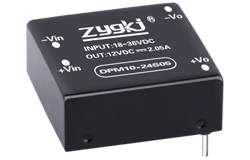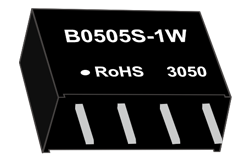বাতৰি
Revolutionizing Power Conversion: The Bidirectional Converter
Author: ZYG Power Module Time: 2023-6-11
The world we live in today is driven by technology. From mobile devices to electric cars, technology has revolutionized the way we live our lives. One area where technology has made significant strides is in power conversion. Power conversion is the process of converting one form of electrical energy to another. This process is crucial in many applications such as renewable energy systems, electric vehicles, and industrial automation systems. The conventional power converters, however, have limitations in terms of efficiency, cost, and reliability. It is in addressing these limitations that the bidirectional converter has emerged as a game-changer in power conversion.
The bidirectional converter is a power converter that can operate in both directions, i.e., it can convert electrical energy from AC to DC and from DC to AC. This capability allows it to perform several functions such as energy storage, power buffering, and regenerative braking. The bidirectional converter is typically used in renewable energy systems such as solar and wind power systems to convert the DC power generated by the panels or turbines into AC power that can be fed back into the grid. It can also be used in electric vehicles to convert the DC power stored in the battery into AC power to drive the motor and vice versa while regenerative braking.
The bidirectional converter has several advantages over the conventional power converters. Firstly, it is more efficient since it can operate in both directions. This means that it can convert energy efficiently both when charging and discharging. Secondly, it is more cost-effective since it eliminates the need for separate converters for charging and discharging. Thirdly, it is more reliable since it can ensure continuous power supply by switching between modes as needed.

The bidirectional converter is a complex system that requires sophisticated control algorithms to operate effectively. The control algorithms must ensure that the converter operates at optimal efficiency and reliability while also maintaining the required power quality. The control algorithms must also ensure that the converter operates safely by monitoring and protecting against over-voltage, under-voltage, over-current, and short-circuit conditions. The development of these algorithms has been made possible by advances in control theory and the availability of powerful control hardware such as digital signal processors.
In conclusion, the bidirectional converter is a revolutionary technology that has transformed power conversion. Its ability to operate in both directions has made it more efficient, cost-effective, and reliable than conventional power converters. The bidirectional converter has found applications in renewable energy systems and electric vehicles. The development of sophisticated control algorithms has enabled the bidirectional converter to operate at optimal efficiency and reliability while ensuring power quality and safety. The future of power conversion is undoubtedly in bidirectional converters, and we can expect to see more applications of this technology in the coming years.
পূৰ্ৱবৰ্তী: 24V AC to DC Converter: Transforming Alternating Current to Direct Current
এটাৰ পাচৰ: Unleashing the Power of LEDs: A Comprehensive Guide to the LED Power Series
প্ৰাসংগিক তথ্য
-
2023-6-11
SP Series AC DC Converter: High Performance and Reliability
The SP Series AC DC Converter is a highly reliable and high-performance power conversion solution that is used in a wide range of applications. Designed to meet the demanding requirements of modern electronic systems, this converter provides exceptional performance, efficiency, and reliability. The SP Series AC DC Converter is able to convert alternating current (AC) power into direct current (DC) power. This is accomplished through the use of high-frequency switching technology and advanced power management algorithms. The end result is a clean and stable output voltage that is free from noise and other electrical disturbances. One of the key benefits of the SP Series AC DC Converter is its high efficiency. This converter is designed to operate with minimal energy...
সবিশেষ চাওক -
2023-7-2
AC-DC Power Supply: Bridging the Gap Between Alternating and Direct Current
Introduction In the world of electrical engineering, power supply plays a crucial role in ensuring the smooth functioning of various electronic devices. One such power supply that bridges the gap between alternating current (AC) and direct current (DC) is the AC-DC power supply. This article aims to provide an in-depth understanding of AC-DC power supply, its working principle, and its applications in different industries. Working Principle of AC-DC Power Supply AC-DC power supply converts the input AC voltage into a DC voltage suitable for electronic devices. The conversion involves three stages: rectification, filtering, and voltage regulation. The first stage, rectification, is achieved using diodes. Diodes allow the flow of current in one direction and block it in the opposite direction....
সবিশেষ চাওক -
2023-8-2
High quality Exploring the World of Electric Power: An Engaging English Series
Electricity is a fundamental part of our lives, powering our homes, businesses, and even our modes of transportation. It is a fascinating and ever-evolving field that continues to shape our modern world. In this series, we will dive into the world of electric power, exploring its history, technology, and impact on society. Chapter 1: The Birth of Electricity Electricity was discovered by scientists in the late 18th century, but it wasn't until the early 19th century that it started being harnessed for practical use. We will delve into the key figures and milestones that led to the birth of electric power, such as Alessandro Volta's invention of the first battery and Michael Faraday's discovery of electromagnetic induction. Chapter 2: The...
সবিশেষ চাওক -
2023-6-3
12V 15A AC to DC Converter: Transforming Alternating Current into Direct Current
In today's world, electricity is an essential part of our daily lives. We use it to power our homes, workplaces, and even our vehicles. However, the electrical power that we receive from the grid is in the form of alternating current (AC), which is not suitable for many devices that require direct current (DC) to operate. This is where a 12V 15A AC to DC converter comes in. As the name suggests, this device converts AC power into DC power, making it possible to power DC devices from an AC source. The process of converting AC power to DC power involves several stages. The first stage is rectification, which involves converting the AC signal into a pulsating DC signal. This...
সবিশেষ চাওক -
2023-4-21
how to wire ac to dc power supply
Introduction The process of converting alternating current (AC) to direct current (DC) is a common requirement in modern electrical systems. AC power is the most commonly available form of electrical power, but many electronic devices require DC power to operate. There are several methods for converting AC power to DC power, each with its own advantages and disadvantages. In this article, we will discuss the process of wiring an AC to DC power supply. Step 1: Determine the Input Voltage The first step in wiring an AC to DC power supply is to determine the input voltage required by the device you wish to power. This information can usually be found on the device itself or in the device user...
সবিশেষ চাওক -
2023-6-4
High-Voltage Power Series: Maximizing Efficiency and Performance
In our modern world, access to reliable and efficient sources of energy is essential for the functioning of everything from our homes to our businesses. One of the most important components in power generation and transmission is high-voltage power systems. These systems, which include transformers, circuit breakers, and other components, are responsible for converting and transmitting power over long distances with minimal losses. In this article, we will explore the importance of high-voltage power systems and how they can be optimized for maximum efficiency and performance. High-voltage power systems are used to transmit electricity over long distances. They are typically used to connect power generation facilities, such as hydroelectric dams or nuclear power plants, to cities and other population centers....
সবিশেষ চাওক


















